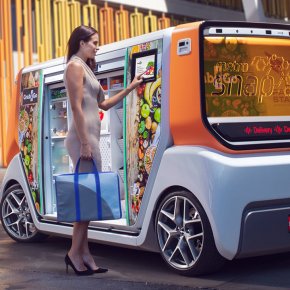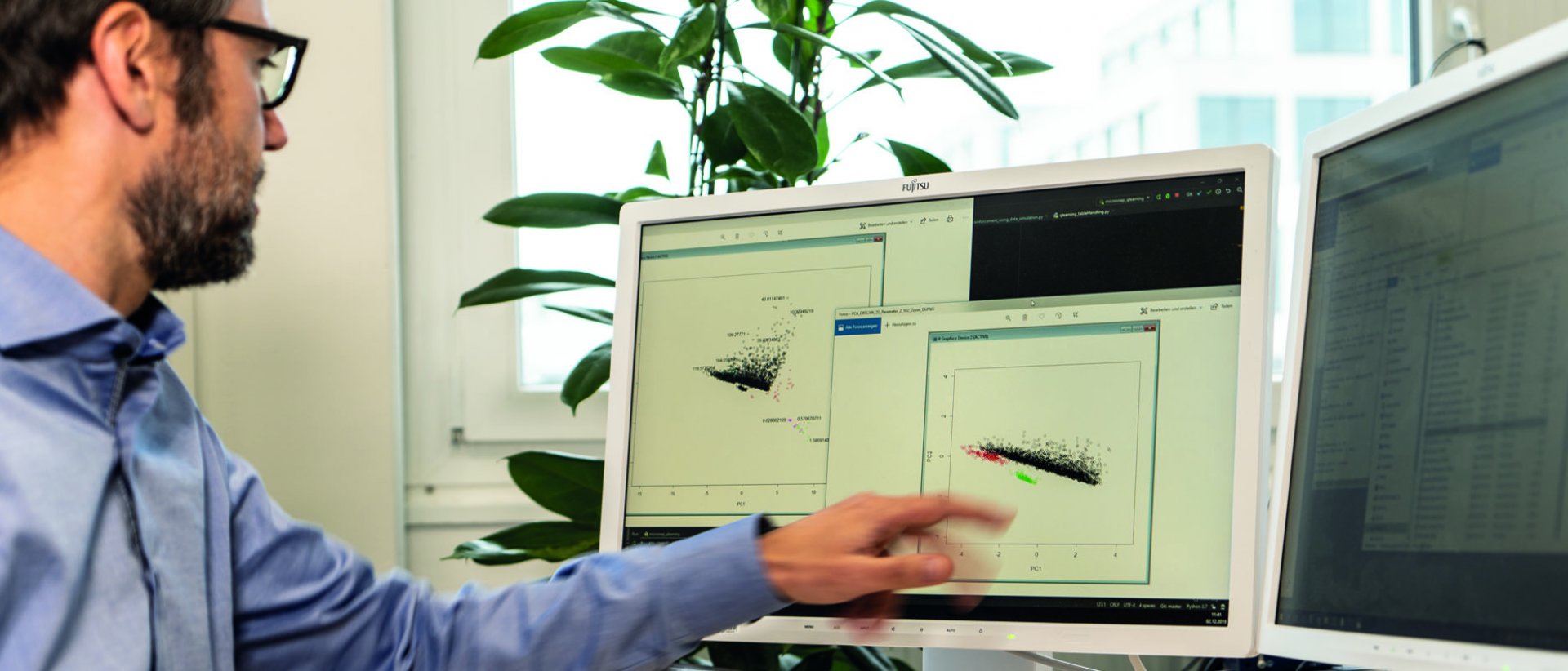

ALGORITHM TO DATA
Clever analysis of measurement data
How the intelligent analysis of measurement data brings about automotive change
It is the small features that will make driving even easier in the future. If the car displays all the dangers of the route ahead in real time, such as a slippery road, it is comfortable and safe. Showing just vacant parking spaces in the immediate vicinity is a minor but luxurious feature that saves time and spares nerves.
Algorithm 2 Data vs Big Data
Regardless of whether it is a matter of implementing simple customer requirements or complex analysis functions: manufacturers need data from the vehicle fleet. A lot of data. This is the great strength of a methodology that creates positive excitement for some, but only a wrinkled brow for others; Big Data. Big Data has long since become part of everyday life, and in the public perception it hovers between great promises of optimal data collection and the actual, measurable benefits.
The analytics team at Cognizant Mobility is familiar with these difficulties. On the one hand, these difficulties naturally lie in specifically evaluating and processing the partly enormous amounts of data that Big Data provides. On the other hand, there is the problem of the very concrete questions that are to be answered by Big Data analyses.
What exactly does Algorithm 2 Data?
To meet exactly these challenges, there is "Algorithm to Data", often abbreviated as "A2D". Instead of collecting masses of data from the entire vehicle fleet centrally for analyses and customer functions, the analyst sends concrete search requests or analysis tasks to a single vehicle and executes them locally. Only the results of these individual queries are returned in the backend. Most vehicle manufacturers refer to this approach as Event Based Data Collection, or Campaign Management.
This methodology offers numerous advantages over a central Big Data solution:
- The amount of data to be sent is small
- No high-end network coverage is required
- The computing power required for data handling is reduced
- Individual events can be dealt with in a specific and coordinated manner
- Only those data are collected that are really needed
In A Nutshell
- Big Data Analytics
- Telematic
- AWS (Amazon Web Services)
- Microsoft Azure
- Spark
- Scala
- Python

Besides these very practical advantages, Algorithm to Data also offers legal security. The question of who actually owns the collected data can thus be kept simple: The driver. During analysis via A2D, the driver's data remain on their own vehicle. The analysis results and the resulting findings are returned to the manufacturer, and the data can be easily anonymized.
How Algorithm 2 Data strengthens mental processes
Of course, it still must be clear in advance of the analysis which data should be searched for at all. Thus, A2D certainly forces users to think about what the goal is before starting the analysis. This is how the widespread, but often baseless, premise that Big Data only collects massive amounts of data, in which data volume users no longer know which data is relevant.
A disadvantage, however, is often hidden even in the most practical approach: The current hardware is not always suitable for targeted analyses on a large scale, especially if these are to be carried out via individual controls. Here, a significant leap in the performance of current computing components must be made. Also, data can hardly be analyzed retrospectively.
The manufacturers therefore rely on so-called Connected Data Recorders in the development phase. Powerful computing hardware that is additionally installed and not only guarantees the traceability of the data, but also has the purpose of detecting and thus prefiltering errors or conspicuous behavior of the software ready in the vehicle. Over-the-air updates can be transferred directly to the vehicle after errors have been detected and eliminated as can be seen in Cognizant's Rapid framework.
Cognizant Mobility and Algorithm 2 Data
Cognizant Mobility designs data and analysis strategies together with the manufacturers and implements them. Not only for pre-development, but also for series production, resulting in customer functions. These include the software modules that are relevant for data exchange with the vehicle.
Cognizant Mobility's Big Data Team also takes care of the selection of the cloud architecture required for this and the subsequent analysis with automatic pattern recognition. In most cases, Amazon Web Services are used, as well as the Apache Spark framework and the Scala programming language.
After all, it is the small features that will make tomorrow's driving even easier. And Cognizant Mobility provides them.


